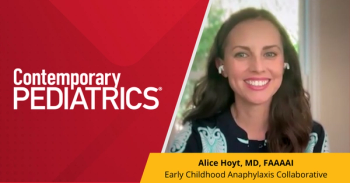
Kids and COVID-19: Illness appears mild
A recent study finds the 2019 coronavirus (COVID-19) is mild in kids and other study that pregnant mothers needn’t worry about vertical transmission. Help families handle the onslaught of media coverage through reassurance and facts.
The sheer volume of 2019 novel coronavirus disease (COVID-19) media coverage is enough to alarm parents and children alike. According to the World Health Organization (WHO) on February 25, 2020, 80,239 cases of the disease in 33 countries and 2700 deaths have been confirmed, with the vast majority occurring in China. However, a
Two recent studies on COVID-19
- The
No neonatal asphyxia was observed in the newborns, and all 9 had a 1-minute Apgar score of 8–9 and 5-minute Apgar score of 9-10. Amniotic fluid, cord blood, neonatal throat swab, and breastmilk samples from 6 patients were tested for SARS-CoV-2, and all tested negative for the virus.
The researchers concluded that COVID-19 doesn’t appear to be transmitted vertically, according to current observation.
- The second study was a
The researchers identified 9 infected infants, 7 of which were girls. They ranged in age from 1 month to 11 months. Fever was reported for 4 infants; mild upper respiratory tract symptoms were found in 2 infants; and 1 infant showed no symptoms but tested positive for COVID-19 in a designated screening because of exposure to infected family members. All 9 infants had at least 1 infected family member.
None of the 9 infants required intensive care or mechanical ventilation and had any severe complications.
Researchers stressed that caregivers of young children in infected homes be vigilant in using typical infection control methods like handwashing.
Allaying the fears of families
The sheer volume of headlines regarding COVID-19 is more than enough to alarm parents as well as older children - resulting in calls or visits to your office. As the anti-vax movement has shown, responding to questions and fears with hard facts only may not be the most effective method.
Consider the following to help educate and soothe parents and older children:
• Be understanding of their concerns, and explain that the current risk is low for people in the United States.
• Stress that influenza prevention techniques they already use - washing hands for at least 20 seconds in soap and water, covering coughs and sneezes with tissues that are immediately thrown away - are effective in reducing the risk of COVID-19.
• Avoid using technical jargon - eg, don’t say fomite; instead say, “surfaces that can retain the disease such as cell phones and countertops.”
• Refer parents to the
• Print and distribute the WHO’s collection of COVID-19
• For parents or children who indicate they want to use face masks to prevent infection, share WHO guidance on
Editor's note: Case count, deaths, and number of countries affected by COVID-19 are accurate as of the date of the publication for this article. For the latest counts, please check the most recent Situation Report from the WHO.
References:
1. Chen H, Guo J, Wang C, et al. Clinical characteristics and intrauterine vertical transmission potential of COVID-19 infection in nine pregnant women: a retrospective review of medical records. Lancet. February 12, 2020. Epub ahead of print. doi:
2. Wei M, Yuan J, Liu Y, Fu T, Yu X, Zhang ZJ. Novel coronavirus infection in hospitalized infants under 1 year of age in China. JAMA. February 14, 2020. Epub ahead of print. doi:
Newsletter
Access practical, evidence-based guidance to support better care for our youngest patients. Join our email list for the latest clinical updates.










